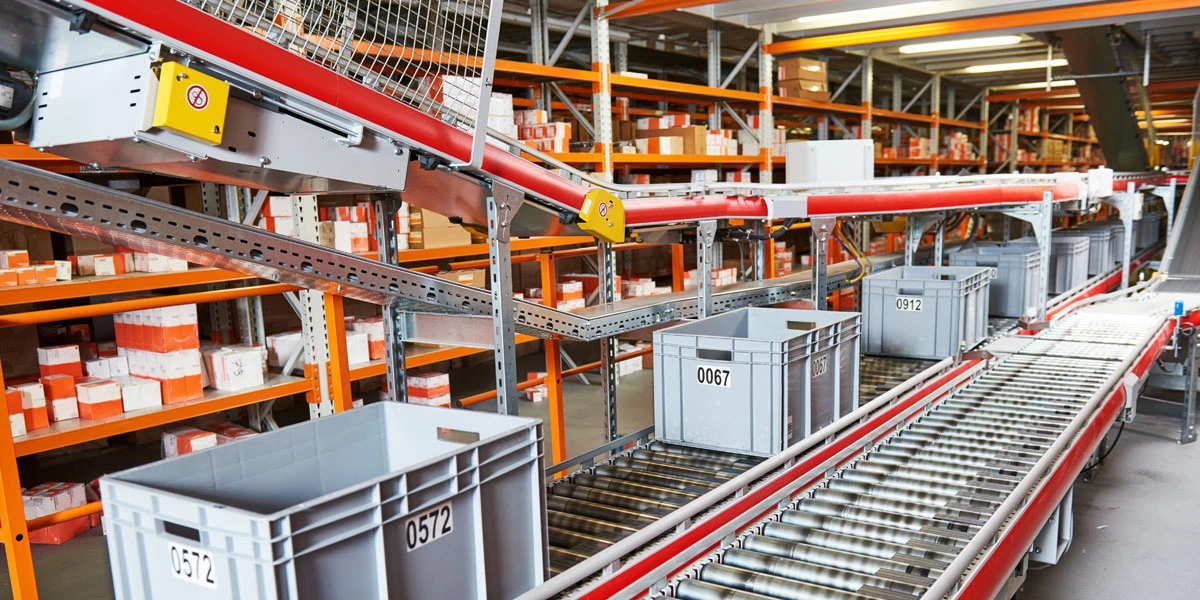How warehouse automation is shaping the future of e-commerce

E-commerce sales are going from strength to strength, thanks to a global surge in smartphone usage and high-speed internet connectivity. Estimates suggest that by 2024, as much as 45% of these sales could pour in from just mobile devices. However, the demand for faster deliveries and quick product exchanges are mounting pressure on warehouses to optimize operational efficiency. To tackle this, a growing number of manufacturers and retailers are turning to warehouse automation. With the logistics automation market expected to hit USD 100 billion by 2023, here’s a deep-dive into some of its key trending technologies.
Workforce mobility
Tasks such as inwarding, picking, and packaging require a lot of mobility within the warehouse. Therefore, leveraging automation in this area is critical to optimizing operations. Technologies such as pick-to-light and put-to-light systems improve accuracy in picking and sorting stocks while reducing labor costs. Trans World Entertainment Corporation, an American entertainment media retailer, deployed put-to-light systems allowing them added capacity within their existing architecture to support increasing online demand. Voice picking technology also catalyzes picking tasks for the team on the floor geared with headsets, by sending instructions via an order management system on what items need to be picked for shipments.
Cobots
Cobots or collaborative robots are becoming allies to warehouse workers aiding them in managing cumbersome tasks. Cobots help by automating a variety of processes, from counting to sorting and even reporting to the systems about daily tasks. Their design allows them to move through warehouse aisles with great efficiency and they can be used across all types of warehouse floors. Moreover, businesses can buy or rent additional Cobots during increased demand, saving huge investments in rigid automation solutions. At the 2019 MARS conference in Las Vegas, Amazon unveiled its new cobot named Pegasus designed to optimize the sorting process at their warehouses.
Multishuttle systems
Multishuttle systems are designed to retrieve or store stocks from multiple locations, mainly for pallet storage within a warehouse. They are developed at large warehouse and distribution centers,mainly for products with non-cyclical demand. Using automation, the system sorts and collects the stock for shipment from its designated location, and without manual intervention,brings it to the target area. It adds greater efficiency, provides flexibility,and less waiting time between production and storage/retrieval systems. Big W in Australia has integrated a multishuttle system developed by Dematic, that’s helping them achieve their throughput volumes and fulfill orders at optimal speed.
Conveyer automation and connection
Warehouse operations are increasingly looking at integrating automation to their conveyers to increase efficiency, reduce labor costs, and maximize safety,by reducing forklift traffic. They can include incline/decline conveyors to feed mezzanine floors, lifts, and spirals where floor space is too restrictive for forklift movements. Also, integrating decision-making software with the WMS (Warehouse Management System) will identify defects in a conveyer belt, and move the stocks to another belt, without human intervention. This will save time, allowing the team to focus on tasks that require skill.
On-demand warehouse
Advanced technologies are helping businesses figure out their exact space requirement and when they need it. Companies such as Walmart, KFC, and Ace Hardware are using an on-demand warehouse during the holidays to cope with issues arising in the supply chain. The technology also allows merchants to fulfill their order capabilities by marking their required space for use and then increasing or decreasing it according to demand changes. This helps warehouses to manage their space more effectively.
Investment areas in automation
Realizing the potential of warehouse technology, several market players are foreseeing tangible investment in automation. 76% agreed that empowering the staff with technology is vital for warehouse automation. Bar-code scanning, tablet computers, big data analytics, truck loading automation, and IoT have also been suggested as key areas that need investments.
Impact on the future of e-commerce
Varied applications of automation in the warehouse can tackle complex e-commerce logistics while being cost-efficient. Moreover, it helps meet the growing trend for faster deliveries and returns. Speed and accuracy of items being picked, shortening fulfillment lead time, are all crucial aspects of e-commerce success.
Moreover, the deployment of automation technology and software need not be an upfront one-time investment. Firms will be better served if they focus on a progressive adoption to optimize their budgets to their business needs.
To get an in-depth understanding of the emerging technologies and market forces affecting the logistics industry, contact info@netscribes.com.






